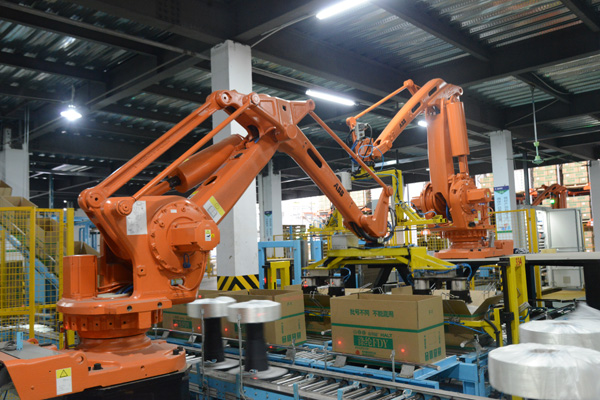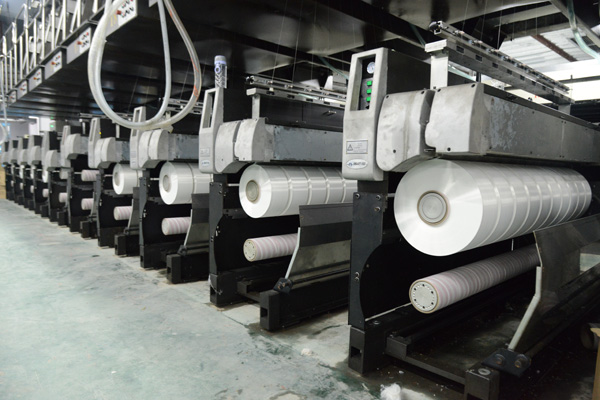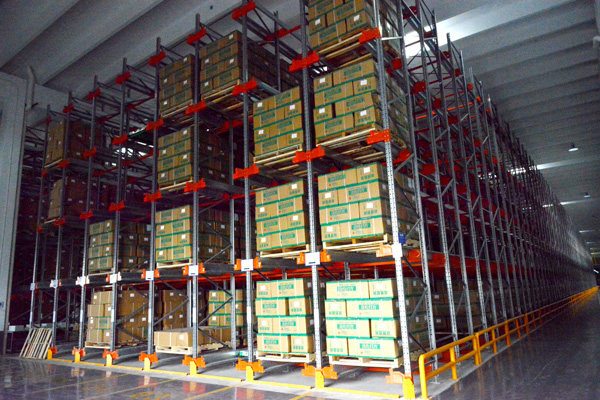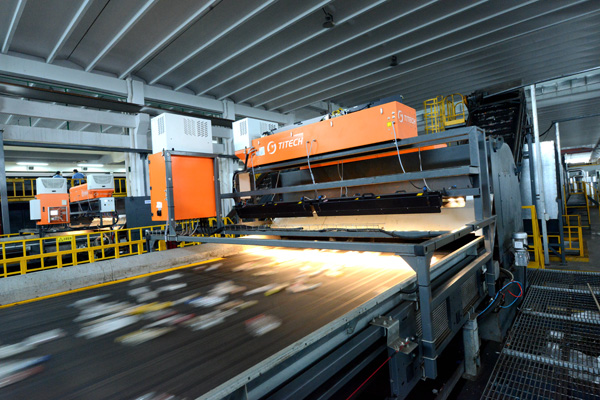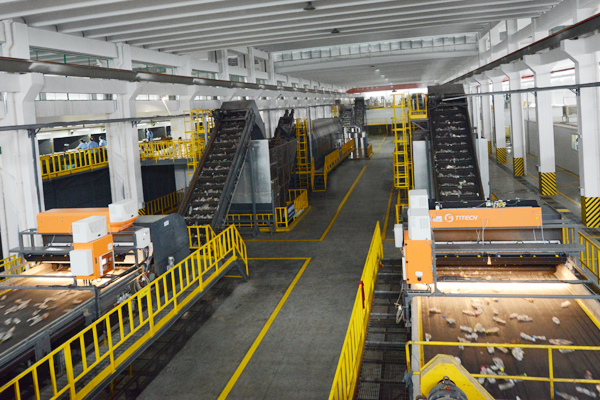Call Us
+86-18368375685
Email Us
sales@zjhaili.cn
Knowledge sharing of conventional chemical fiber fabrics!
2022-04-22
1、 Introduction to raw materials
Properties of polyester (PET):
1. Strong wear resistance.
2. The water absorption is poor, and the public moisture regain is 0.4% (20 ℃, relative humidity 65%, 100g polyester water absorption 0.4g).
3. Easy to generate static electricity, easy to fuzz and pilling.
4. Acid and alkali resistant. Note: a certain concentration of alkali destroys the polyester surface at a certain temperature and makes the fabric feel soft.
5. Good corrosion resistance and light resistance.
6. The fabric made of polyester fiber is not easy to wrinkle, has good dimensional stability, is easy to wash and dry.
Polyester spinning form:
1. FDY (filament): single fiber is parallel, smooth and uniform, with large distribution, light, half light, extinction, and the brightness is getting weaker and weaker.
2. DTY (elastic wire): single fiber bending, low expansion, fluffy.
3. DTY network wire (low elastic network wire): get network points in stages to increase the clustering capacity between fibers. It is divided into no net, light net, medium net and heavy net, of which the heavy net can be used as pulp free silk. Generally, FDY and DTY must be starched or twisted before they can be used as warp.
Sizing: increase the strength of silk thread; Cohesion between fibers; Make the fiber surface smooth and easy to weave.
Twisting: increase strength; Increase the holding force between fibers; Make the fabric have crepe effect.
Twist: (T) the number of turns of silk thread per centimeter.
0-10 T / cm weak twist 10-20 T / cm medium twist 20 t / cm strong twist
4. POY (pre oriented yarn): it can be elongated and can not rebound. It can not be made into warp or weft alone. It must be combined with other wires and can be elongated by 1.6 times. POY wire is a semi-finished product of low elastic network wire. Typical fabric: washed velvet.
5. ATY (air textured wire): the surface is not smooth and there are haircircles. Typical fabric: Taffeta velvet
6. Polyester staple fiber: it is formed by twisting several staple fibers along the axial direction.
7. Polyester slub yarn: it is twisted from filament and low elastic yarn, and the speed of elastic yarn is slow.
8. High elastic wire: high elasticity and fluffy.
9. Polyester cationic filament: it can produce two-color effect with ordinary polyester filament. It is easy to dye and has bright color.
Properties of nylon (PA) or nylon nylon (n)
1. The strength is very good, even exceeding the steel wire with the same fineness.
2. Wear resistance is very good, more than other textile fibers, suitable for sportswear, socks, parachutes, cables.
3. Poor water absorption, public moisture regain of 4%, easy to static electricity, fuzzing and pilling.
4. It is alkali resistant but not acid resistant, and can be dissolved in 37.5% hydrochloric acid.
5. It has good corrosion resistance, poor water resistance, poor light resistance and heat resistance, and the strength decreases and turns yellow after long exposure to the sun.
6. The clothes made of nylon are easy to deform and wrinkle.
Spinning form: mainly FDY, ATY
Properties of spandex (PU)
It can be extended by 500-800%, with low strength, sweat resistance, seawater resistance, acid resistance and alkali resistance. It can not be used as warp and weft thread alone, but must be coated with other silk yarns.
The main forms of spandex coating are: empty package (spandex can be clearly seen); Machine bag (spandex wrapped inside)
Island composite wire
It is a composite wire made of Sea Island wire and high shrinkage wire.
High shrinkage silk: boiling water shrinkage rate reaches 35% (so the rate of suede is very high).
Sea Island silk: microfiber, single fiber up to 0.138 (producing the feeling of suede).
Properties of viscose (R) viscose fiber
1. The chemical composition is the same as that of cotton, and the performance is close to that of cotton;
2. Better moisture absorption than cotton, easy dyeing, bright dyeing and good color fastness;
3. The wet strength is low, which is 40-60% of the dry strength. The elasticity and wear resistance in the wet state are poor. The viscose fabric is not resistant to washing and has poor dimensional stability.
Spinning form: viscose filament rayon rayon rayon
Viscose staple -- rayon -- rayon
Properties of acetate fiber
1. The moisture regain is 6%, semi hydrophobic fiber;
2. The strength is not good enough, with silk like luster and smooth feel;
3. Soft, easy to deform and poor wear resistance;
4. Compared with viscose, acetate fiber has low strength, poor moisture absorption, poor dyeing, and better hand feel, elasticity, luster and warmth retention than viscose fiber.
Metal foil
Stainless steel wire, single wire specification: 0.035mm-0.28mm
Function: flash, conductive, flame retardant, anti radiation function.
2、 Introduction to common chemical fiber fabrics
1. Polyester taffeta and taffeta, polyester plain spinning and polyester taffeta
Plain weave polyester
Longitude and latitude: 68D / 24F FDY all polyester semi gloss plain fabric.
Mainly: 170t, 190T, 210t, 240t, 260t, 300t, 320t, 400t
T: Is the sum of longitude and latitude density in inches. For example, 190 t is the sum of longitude and latitude density is 190 (generally less than 190).
Purpose: General lining
2. Nylon taffeta nylon taffeta
Plain weave nylon
70D or 40d nylon FDY is used for warp and weft, and the density is 190t-400t
Now there are many derivatives of NiSi spinning, all called Nisi spinning, including twill, satin, plaid, jacquard and so on.
Usage: Men's and women's clothing fabric. Coated nylon textile is airtight, waterproof and anti down. It is used as the fabric of ski shirts, raincoats, sleeping bags and mountaineering clothes.
3. Polye
Plain weave polyester
At least one of longitude and latitude is low elastic (Network) wire
The warp and weft are all elastic silk, which is called full elastic spring Asian spinning, and the radial filament is called semi elastic spring Asian spinning
The original Chunya textile is plain weave. Now there are many derivatives with complete specifications, and the density is from 170t to 400t
There are semi gloss, extinction, twill, dots, stripes, flat, floating, diamond, football, waffle, diagonal, plum blossom
Usage: "semi elastic spring Asian textile" fabric has been used to make lining accessories such as suits, suits, jackets, children's clothes and professional clothes; "Spring Asian textile" can be used to make down clothes, casual jackets, children's clothes, etc. waterproof coated fabrics can also be used to make waterproof clothes, umbrellas, ponchos, sunshades, etc
Properties of polyester (PET):
1. Strong wear resistance.
2. The water absorption is poor, and the public moisture regain is 0.4% (20 ℃, relative humidity 65%, 100g polyester water absorption 0.4g).
3. Easy to generate static electricity, easy to fuzz and pilling.
4. Acid and alkali resistant. Note: a certain concentration of alkali destroys the polyester surface at a certain temperature and makes the fabric feel soft.
5. Good corrosion resistance and light resistance.
6. The fabric made of polyester fiber is not easy to wrinkle, has good dimensional stability, is easy to wash and dry.
Polyester spinning form:
1. FDY (filament): single fiber is parallel, smooth and uniform, with large distribution, light, half light, extinction, and the brightness is getting weaker and weaker.
2. DTY (elastic wire): single fiber bending, low expansion, fluffy.
3. DTY network wire (low elastic network wire): get network points in stages to increase the clustering capacity between fibers. It is divided into no net, light net, medium net and heavy net, of which the heavy net can be used as pulp free silk. Generally, FDY and DTY must be starched or twisted before they can be used as warp.
Sizing: increase the strength of silk thread; Cohesion between fibers; Make the fiber surface smooth and easy to weave.
Twisting: increase strength; Increase the holding force between fibers; Make the fabric have crepe effect.
Twist: (T) the number of turns of silk thread per centimeter.
0-10 T / cm weak twist 10-20 T / cm medium twist 20 t / cm strong twist
4. POY (pre oriented yarn): it can be elongated and can not rebound. It can not be made into warp or weft alone. It must be combined with other wires and can be elongated by 1.6 times. POY wire is a semi-finished product of low elastic network wire. Typical fabric: washed velvet.
5. ATY (air textured wire): the surface is not smooth and there are haircircles. Typical fabric: Taffeta velvet
6. Polyester staple fiber: it is formed by twisting several staple fibers along the axial direction.
7. Polyester slub yarn: it is twisted from filament and low elastic yarn, and the speed of elastic yarn is slow.
8. High elastic wire: high elasticity and fluffy.
9. Polyester cationic filament: it can produce two-color effect with ordinary polyester filament. It is easy to dye and has bright color.
Properties of nylon (PA) or nylon nylon (n)
1. The strength is very good, even exceeding the steel wire with the same fineness.
2. Wear resistance is very good, more than other textile fibers, suitable for sportswear, socks, parachutes, cables.
3. Poor water absorption, public moisture regain of 4%, easy to static electricity, fuzzing and pilling.
4. It is alkali resistant but not acid resistant, and can be dissolved in 37.5% hydrochloric acid.
5. It has good corrosion resistance, poor water resistance, poor light resistance and heat resistance, and the strength decreases and turns yellow after long exposure to the sun.
6. The clothes made of nylon are easy to deform and wrinkle.
Spinning form: mainly FDY, ATY
Properties of spandex (PU)
It can be extended by 500-800%, with low strength, sweat resistance, seawater resistance, acid resistance and alkali resistance. It can not be used as warp and weft thread alone, but must be coated with other silk yarns.
The main forms of spandex coating are: empty package (spandex can be clearly seen); Machine bag (spandex wrapped inside)
Island composite wire
It is a composite wire made of Sea Island wire and high shrinkage wire.
High shrinkage silk: boiling water shrinkage rate reaches 35% (so the rate of suede is very high).
Sea Island silk: microfiber, single fiber up to 0.138 (producing the feeling of suede).
Properties of viscose (R) viscose fiber
1. The chemical composition is the same as that of cotton, and the performance is close to that of cotton;
2. Better moisture absorption than cotton, easy dyeing, bright dyeing and good color fastness;
3. The wet strength is low, which is 40-60% of the dry strength. The elasticity and wear resistance in the wet state are poor. The viscose fabric is not resistant to washing and has poor dimensional stability.
Spinning form: viscose filament rayon rayon rayon
Viscose staple -- rayon -- rayon
Properties of acetate fiber
1. The moisture regain is 6%, semi hydrophobic fiber;
2. The strength is not good enough, with silk like luster and smooth feel;
3. Soft, easy to deform and poor wear resistance;
4. Compared with viscose, acetate fiber has low strength, poor moisture absorption, poor dyeing, and better hand feel, elasticity, luster and warmth retention than viscose fiber.
Metal foil
Stainless steel wire, single wire specification: 0.035mm-0.28mm
Function: flash, conductive, flame retardant, anti radiation function.
2、 Introduction to common chemical fiber fabrics
1. Polyester taffeta and taffeta, polyester plain spinning and polyester taffeta
Plain weave polyester
Longitude and latitude: 68D / 24F FDY all polyester semi gloss plain fabric.
Mainly: 170t, 190T, 210t, 240t, 260t, 300t, 320t, 400t
T: Is the sum of longitude and latitude density in inches. For example, 190 t is the sum of longitude and latitude density is 190 (generally less than 190).
Purpose: General lining
2. Nylon taffeta nylon taffeta
Plain weave nylon
70D or 40d nylon FDY is used for warp and weft, and the density is 190t-400t
Now there are many derivatives of NiSi spinning, all called Nisi spinning, including twill, satin, plaid, jacquard and so on.
Usage: Men's and women's clothing fabric. Coated nylon textile is airtight, waterproof and anti down. It is used as the fabric of ski shirts, raincoats, sleeping bags and mountaineering clothes.
3. Polye
Plain weave polyester
At least one of longitude and latitude is low elastic (Network) wire
The warp and weft are all elastic silk, which is called full elastic spring Asian spinning, and the radial filament is called semi elastic spring Asian spinning
The original Chunya textile is plain weave. Now there are many derivatives with complete specifications, and the density is from 170t to 400t
There are semi gloss, extinction, twill, dots, stripes, flat, floating, diamond, football, waffle, diagonal, plum blossom
Usage: "semi elastic spring Asian textile" fabric has been used to make lining accessories such as suits, suits, jackets, children's clothes and professional clothes; "Spring Asian textile" can be used to make down clothes, casual jackets, children's clothes, etc. waterproof coated fabrics can also be used to make waterproof clothes, umbrellas, ponchos, sunshades, etc
Previous:Functional recycled polyester fiber
We use cookies to offer you a better browsing experience, analyze site traffic and personalize content. By using this site, you agree to our use of cookies.
Privacy Policy


























